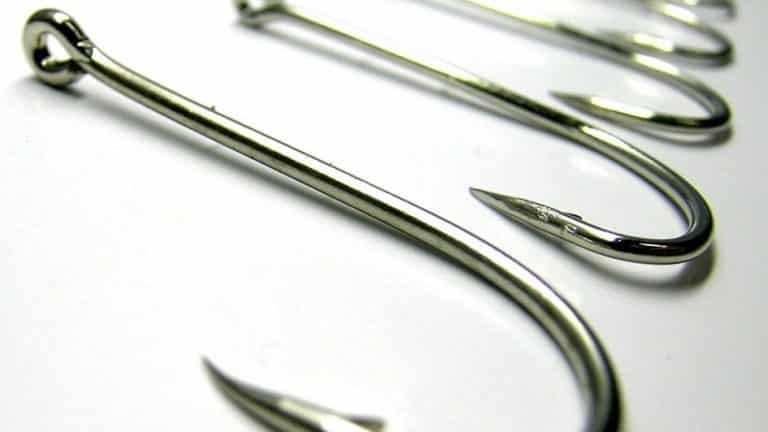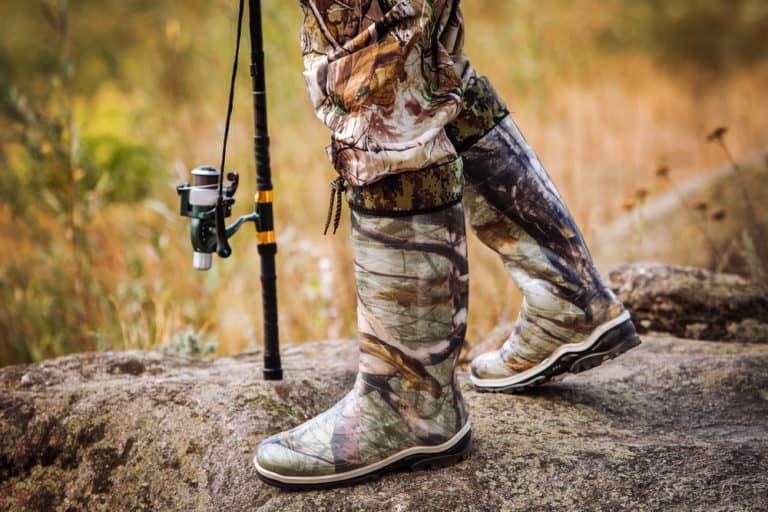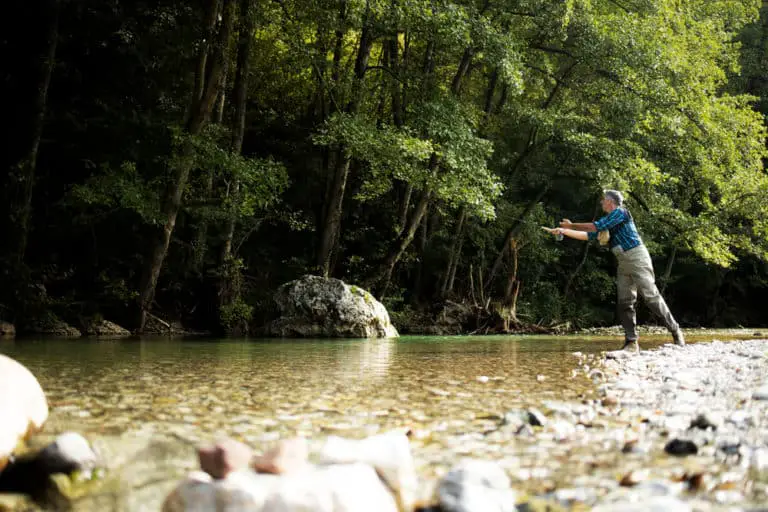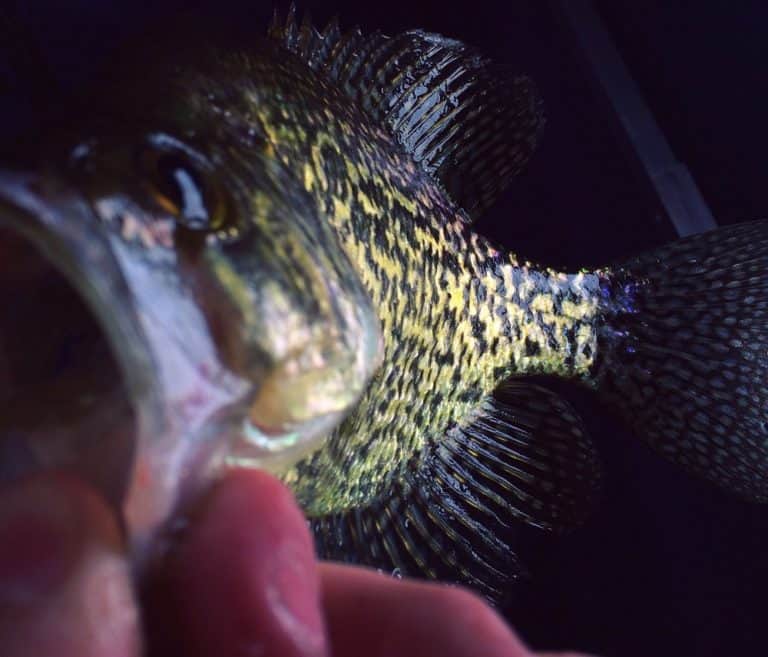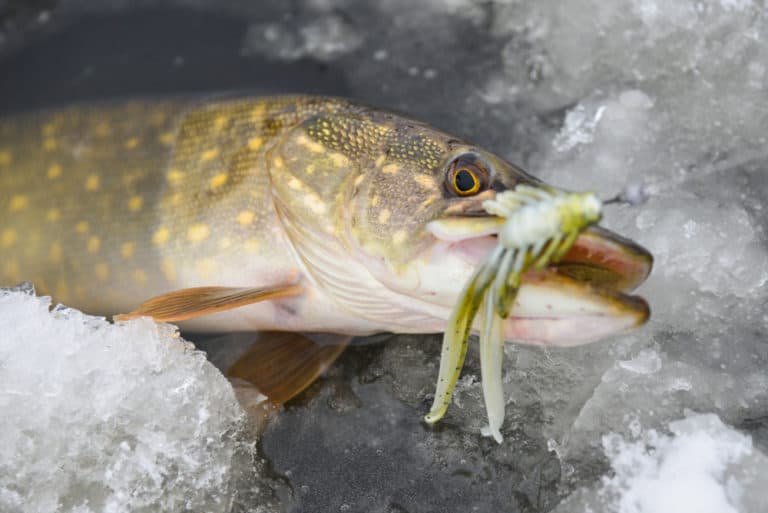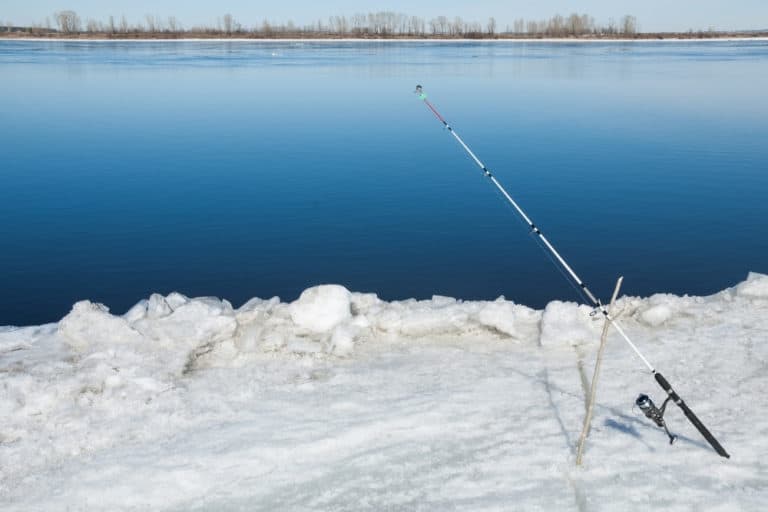Safe Ice Fishing Ice Thickness
It’s probably no surprise to you that ice fishing is one of the most dangerous forms of fishing, maybe even one of the most dangerous hobbies, anyone can undertake.
The combination of harsh conditions, treacherous terrain, and the fact you’re teetering over hundreds of feet of freezing water mean that safety is the most important part of ice fishing, before even considering the other equipment you need or where the best spots are.
Making sure that the ice is safe for fishing is the very first thing all ice fishers need to do, and no matter how familiar you are with your spot, or how confident you are in your ability, its really important to stay vigilant, as a moment’s carelessness can have dire consequences for your whole fishing trip as well as your health.
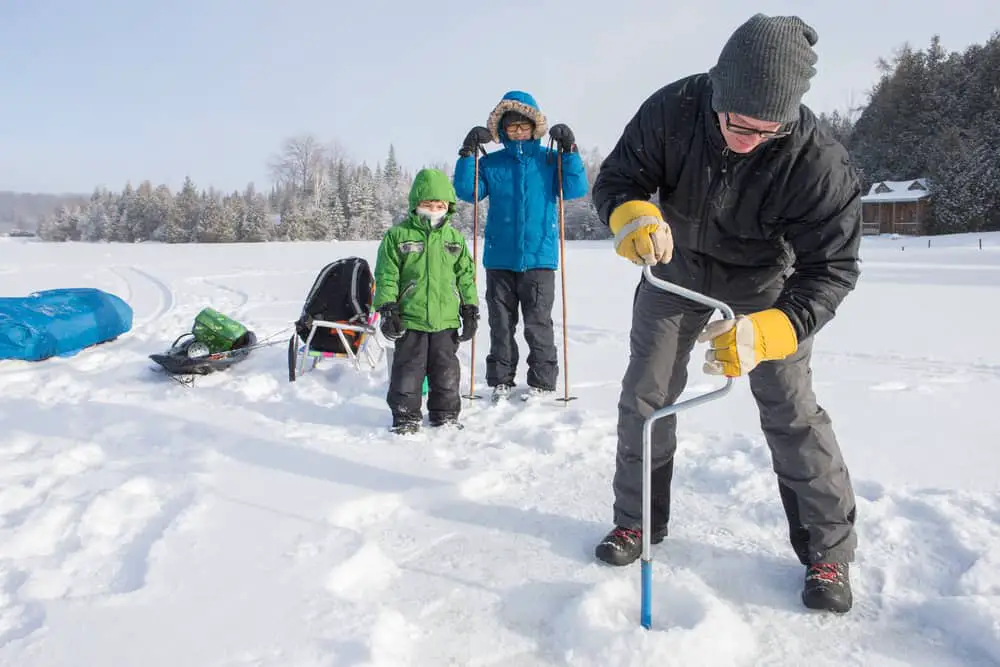
There are many things that can affect the ice too, and not all of them will be immediately obvious. Temperature changes, snow cover, underwater springs, tides, and currents can all have a massive impact on the quality of the ice, its thickness, and its stability.
The changeable nature of these different factors also means that different areas of a lake or other body of water may not be uniformly thick, which means you’ll need to measure the ice regularly to prevent anything bad from happening.
As a first tip, if you’re unfamiliar with the area, try speaking to a local source for information about good spots, and ask for areas to avoid as well as for an update on the conditions of the lake and things like wind and features to look out for.
Locals will almost always know what to look out for and what to avoid, and there’s no shame in getting some advice even if you’re a very confident ice fisher.
In this article, we’re going to look at the importance of understanding the different levels of ice thickness, and provide some guidelines to use to make sure you stay safe on the ice and can get on with enjoying the fishing.
Table of Contents
How thick should ice be for ice fishing?
The absolute minimum ice thickness for one angler should be 4 inches. This is still considered quite thin and this thickness isn’t suitable for groups or even pairs of anglers in close proximity so be aware of this, especially if you’re solo but are bringing quite a lot of equipment with you.
Anything below 3 inches of thickness is considered unsafe to traverse in any manner, with 3 inches only being suitable for some very brave cross-counter skiers.
5 inches is considered enough to support a snowmobile, and 6 inches is considered enough for iceboating, but for group activities or multiple anglers, 7 inches is considered the sweet spot. 8 Inches of ice will be able to support a car, 9 inches will be able to support several snowmobile sand 11 inches is considered enough to support a light truck.
In terms of weight, 4 inches of ice may be considered enough for one angler, but this assumes a maximum weight, with gear, of 200lbs so if you’re on the larger side or are hauling a lot of equipment, thicker ice obviously recommended.
It’s also important to note that ice tends to have different qualities in different areas of the lake. It will naturally be thinner and weaker the closer you get to the middle, however, the edges of the lake are also the most likely to start thawing out, so these areas can also be quite treacherous if you don’t keep your wits about you.
If you’re unsure, don’t be afraid to continue to monitor the thickness. A good rule of thumb is that if the ice is cloudy, it probably isn’t going to be very strong, as the cloudiness means it’s full of air bubbles and will be exceptionally weak and likely to crack.
Clear ice, while sometimes on the thinner side, is usually more reliable as it’s fresher and isn’t compromised by air bubbles which makes it more solid and reliable.
How do you know if ice is thick enough to fish?
Quite simply, you check it. If you measure it using the equipment listed above and the ice is thick enough to support your weight, you are in business and can set up shop for a good day’s fishing.
If the ice is below 3 inches thick, it’s time to consider backing away to a safer area because this ice isn’t thick enough to support you, let alone your equipment for several hours.
When is it safe to go ice fishing?
The safest time to go ice fishing is when the ice is thick enough, it’s as simple as that. 4 inches of clear, fresh ice is fine for most people, but can still be a risk.
It’s also important to note that even after taking all these precautions, it’s never fully safe and accidents can always happen, but, after all, that’s part of the fun right?
How to test ice thickness?
Once you’ve spoken to the local sources and checked the weather conditions, it’s important to still check the ice yourself on-site, and continually keep track of its thickness as you move around on it.
There are a few tools you should have on you while you’re ice fishing that makes checking the thickness possible and also helps make it much safer.
Consider using;
- Ice Picks
- Safety Rope (100 feet)
- Ice Auger / Chisel / Spud Bar
- Rule / Tape measure
- Cell phone or two-way radio
- Life preserver / life jacket
Of course, you should also be wearing appropriate winter clothing and ice fishing attire with waterproof ice fishing boots to help keep you warm and dry while you’re completing your tests.
It’s also important to note that once you’ve completed your tests there’s no use in leaving and then coming back and using the exact same tests and expecting them to be exactly the same. As mentioned previously, ice is fickle, and it can change if you leave for hours and return later to actually fish.

